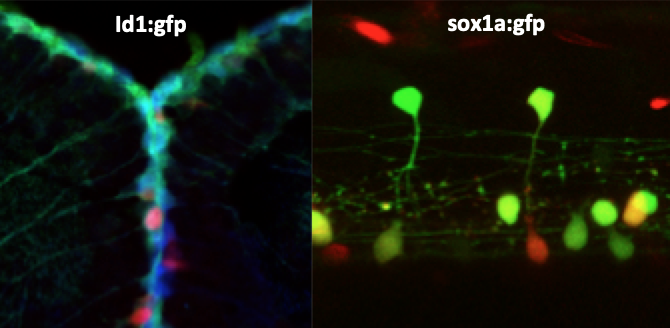Lab
Rastegar Lab
|

|
Statement of Research Interest
Our nervous system comprises a vast number of diverse neurons that are essential for connecting us to our environment and facilitating the normal functions of our organs. However, a crucial but still poorly understood question is how this multitude of neurons, each with distinct functions, is generated. This is why my laboratory is dedicated to studying the processes underlying neuron generation, differentiation and regeneration, using the embryonic spinal cord and the adult telencephalon as model systems, respectively. The majority of our research is carried out on zebrafish due to its high genetic similarity (>70%) with humans. Moreover, zebrafish are amenable to genetic manipulation techniques, making them invaluable for the study of a variety of biological processes. In addition, their physiological and immune systems are very similar to those of humans, making them important for drug discovery and toxicity studies. The zebrafish is particularly useful for high-throughput drug screening to identify potential therapeutic agents involved in regeneration. Our research focuses on understanding the complex role of transcriptional regulators (TRs) and their corresponding cis-regulatory elements (CREs) in controlling gene expression patterns during neurogenesis. Transcriptional regulators play an essential role in orchestrating gene expression during neurodevelopment by binding to specific regions of DNA, known as cis-regulatory elements, within gene regulatory regions. Through these interactions, TRs can either enhance or repress gene expression, thereby regulating the activity of specific TRs during neurodevelopment. Our aim is to decipher the complex network of TRs and CREs that regulates neurogenesis in zebrafish embryos and the adult central nervous system (CNS). Using a wide range of molecular biology techniques, including advanced gene-editing technologies such as CRISPR/Cas9, transgenic reporter assays and high-throughput sequencing methods, we aim to identify and characterize the key TRs and CREs responsible for controlling neurogenesis. In addition, through collaboration with colleagues in chemistry, we are involved in characterizing natural compounds as drugs or synthetic inhibitors targeting different signaling pathways, such as BMP, Notch and Shh. We are also studying molecules with photomodulatory activity, broadening our understanding of potential therapeutic interventions for neuroregeneration.
Lab Members
| Chen, Jincan Graduate Student | Hoareau, Mathilde Graduate Student | Köhler, Melina Graduate Student |
| Pfitsch, Sabrina Graduate Student | Beil, Tanja Technical Staff | Schröck, Anne Technical Staff |
